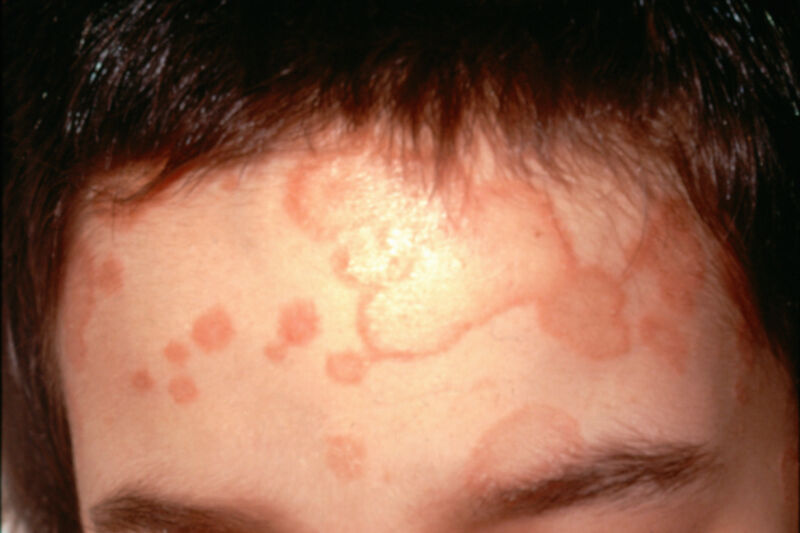Clinicians in the US may be overprescribing topical antifungal treatments for skin infections, potentially exacerbating a growing problem of drug resistance, according to a new study.
Last year, a dermatologist in New York reported the country's first cases of a newly emerging skin fungus that is highly contagious and resistant to common antifungal treatments. Silent community spread appeared to be behind the unconnected cases. Overall, drug-resistant fungal skin infection cases (aka ringworm) have been identified in at least 11 US states to date.
With resistance on the rise, researchers at the Centers for Disease Control and Prevention took a closer look at how US clinicians prescribe topical antifungals. As is the case of antibiotics and bacterial infections, overuse of antifungals can drive the development of resistance. And properly diagnosing skin infections can be extremely difficult without diagnostics. A 2016 survey study found that even board-certified dermatologists were frequently wrong when trying to identify skin infections just by sight.
As a first step to assessing the situation, the CDC researchers turned to data on prescriptions written for 48.8 million Medicare Part D beneficiaries in 2021. In the whole year, clinicians prescribed 6.5 million topical antifungal treatments. That's enough prescriptions for about one out of every eight Medicare Part D beneficiaries to get an antifungal.
Among the total dataset of Medicare prescribers, there were a little over a million prescribing clinicians, but only about 131,000 of those clinicians prescribed topical antifungals. When those prescribers were ranked by the volume of antifungal treatments they prescribed, the top 10 percent—13,106 prescribers—accounted for about 45 percent of all the antifungal prescriptions written that year, or 2.9 million of the total 6.5 million.
Problematic prescribers
Most of the year's topics antifungal prescriptions were written by primary care physicians, who wrote about 40 percent of the prescriptions. They were followed by nurse practitioners/physician assistants, dermatologists, and podiatrists.
The most common prescriptions were for ketoconazole, nystatin, and clotrimazole-betamethasone dipropionate, a combination medicine containing an antifungal and a corticosteroid. The latter is particularly concerning since the combination is thought to be a driver of drug resistance.
While the data points to some providers potentially overprescribing antifungal medications—and some antifungal medications that are particularly prone to driving resistance—the researchers didn't have diagnostic data on the cases. Thus, they couldn't tell how many antifungal prescriptions were backed up by diagnostic testing confirming a fungal infection. That said, another limitation of the study is that it didn't capture the use of over-the-counter antifungal medications. Therefore, the use of antifungals among Medicare beneficiaries is likely underestimated.
The study is a preliminary step to improving antifungal stewardship, the authors note. But "The substantial volume of topical antifungal and antifungal-corticosteroid prescriptions among Medicare Part D beneficiaries in the setting of emerging resistant infections underscores the need to evaluate current practices of topical antifungal use," the authors conclude. Clinicians should "be judicious," they caution, and confirm fungal skin infection diagnoses when possible.



3175x175(CURRENT).thumb.jpg.b05acc060982b36f5891ba728e6d953c.jpg)

Recommended Comments
There are no comments to display.
Join the conversation
You can post now and register later. If you have an account, sign in now to post with your account.
Note: Your post will require moderator approval before it will be visible.